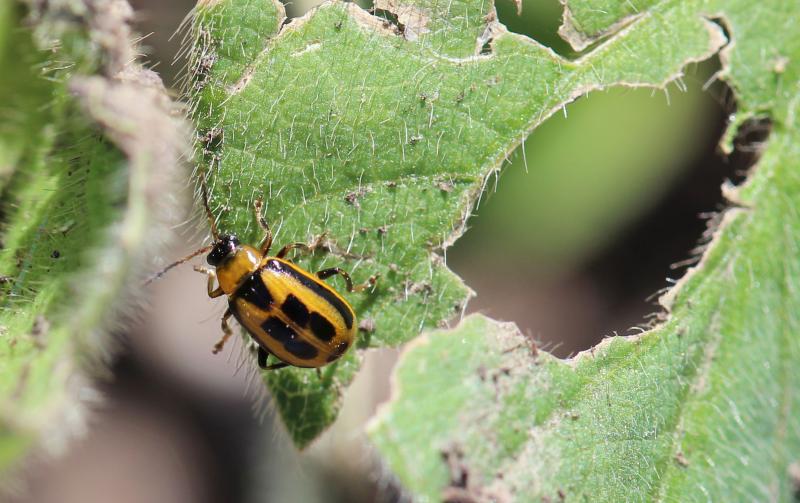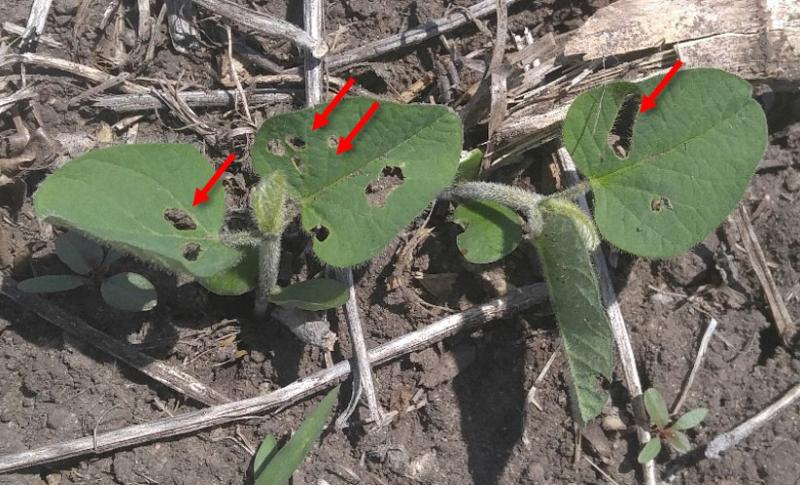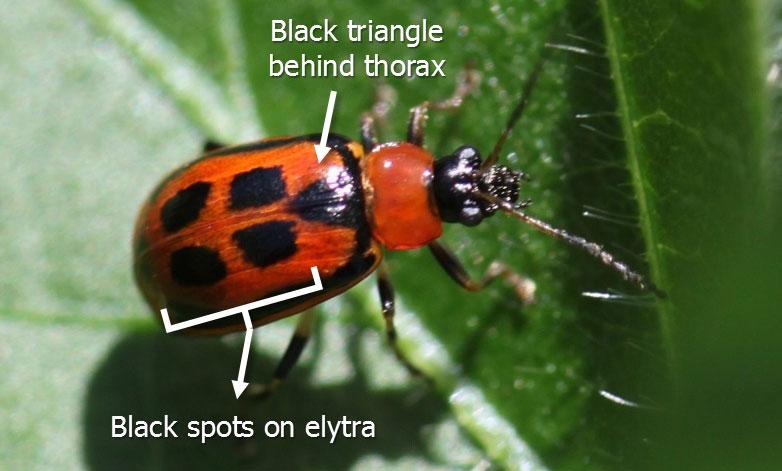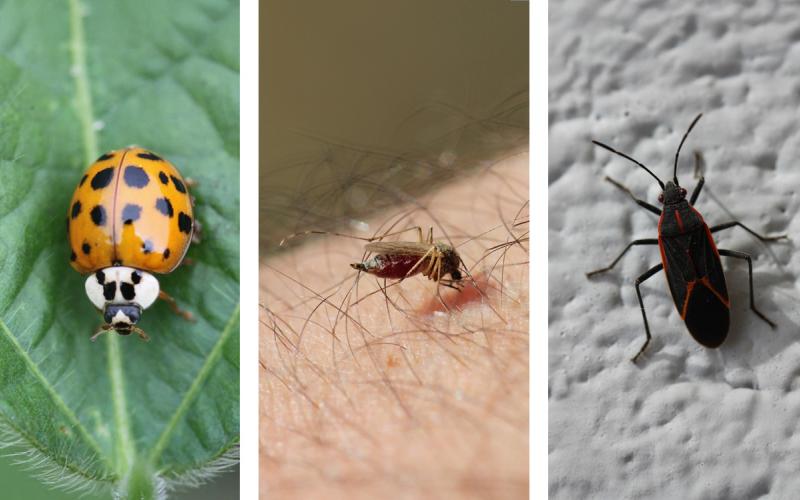
We are receiving numerous reports and also observing very large bean leaf beetle populations this year (Figure 1). As a result, there is also a lot of concern about soybean defoliation due to the emergence and subsequent feeding by the overwintering adult population. The use of insecticide seed treatments reduces the threat of bean leaf beetle feeding, but even treated fields should still be scouted. Treated fields will often have reduced feeding, but large populations of bean leaf beetles could still cause some defoliation injury.
One of the common questions is, “When should I treat for bean leaf beetle feeding?” The text book answer is when enough defoliation has occurred to reach threshold or when enough bean leaf beetles are present. However, observing extensive defoliation in a field of seedling soybean isn’t easy to adjust to and bean leaf beetles are notoriously difficult to sample for because of their defense behavior of dropping from disturbed soybean plants.
Scouting Strategies

Prior to soybean flowering, we recommend treating soybean when an average of 20% defoliation is observed. However, this can be tricky to estimate when soybean are just starting to emerge or are in the early vegetative stages. Additionally, soybean can look severely defoliated, but the percent defilation can still be relatively low. An alternative method is to count the number of adult bean leaf beetles per plant.

Defoliation Threshold
To scout for early season bean leaf beetles, examine 20 plants in five different areas of the field.
If you are using the defoliation threshold, look for holes in the leaves as well as feeding on the stems or cotyledons (Figure 2).
Management is recommended when an average of 20% of the leaf tissue is removed from the scouted plants (Figure 3).
Remember that all leaves present must be evaluated and that it is estimated that maximum defoliation on soybean due to bean leaf beetle feeding is likely around 50%.

Visual Counts
If you are scouting by using visual counts of bean leaf beetle adults, look at 20 plants from five different areas throughout the field. When counting adults, it is important to avoid disturbing the plants as bean leaf beetles will often drop to the ground and hide under soil or other debris. Avoid casting a shadow on the plants that are being scouted, as that will also cause beetles to drop from the plants. The adult bean leaf beetles can vary in color from brown, orange, yellow, red and varying shades of those colors. Adults can be identified by the black triangle present behind their thorax (Figure 4). Adults will also have black heads and will generally have four spots on their hardened forewings (elytra). The thresholds for VC to V1 soybean are listed in Table 1.
| VC Stage |
|
|||
| Crop Value | $6 | $8 | $10 | $12 |
| $8 | 2 | 2 | 3 | 4 |
| $9 | 2 | 2 | 3 | 3 |
| $10 | 1 | 2 | 2 | 3 |
| $11 | 1 | 2 | 2 | 2 |
| V1 Stage |
|
|||
| Crop Value | $6 | $8 | $10 | $12 |
| $8 | 3 | 3 | 4 | 5 |
| $9 | 2 | 3 | 4 | 4 |
| $10 | 2 | 3 | 3 | 4 |
| $11 | 2 | 2 | 3 | 4 |
| *Adapted from University of Nebraska-Lincoln | ||||
Management
Products labeled for bean leaf beetle in South Dakota can be found in the 2019 South Dakota Pest Management Guide: Soybeans.


